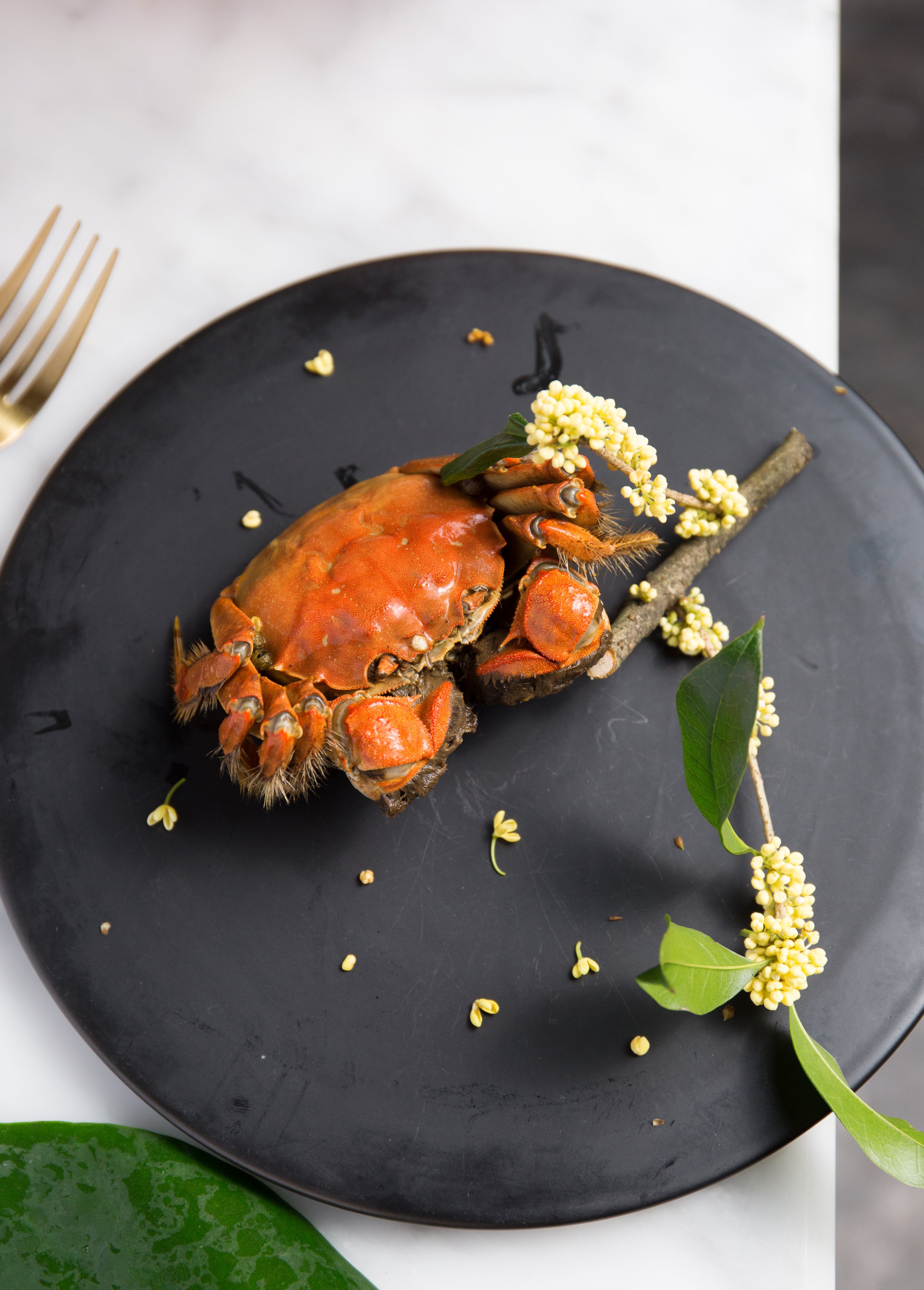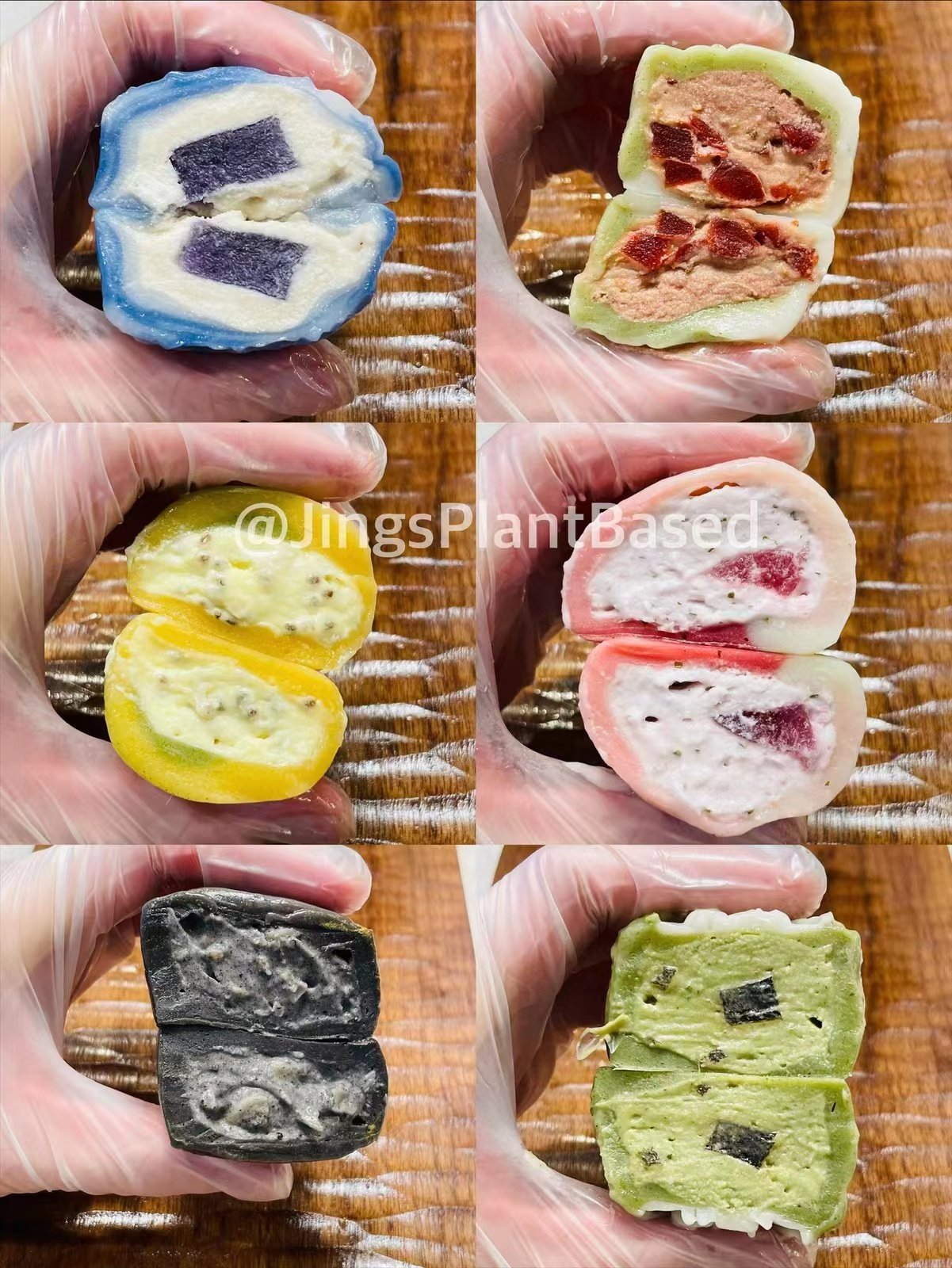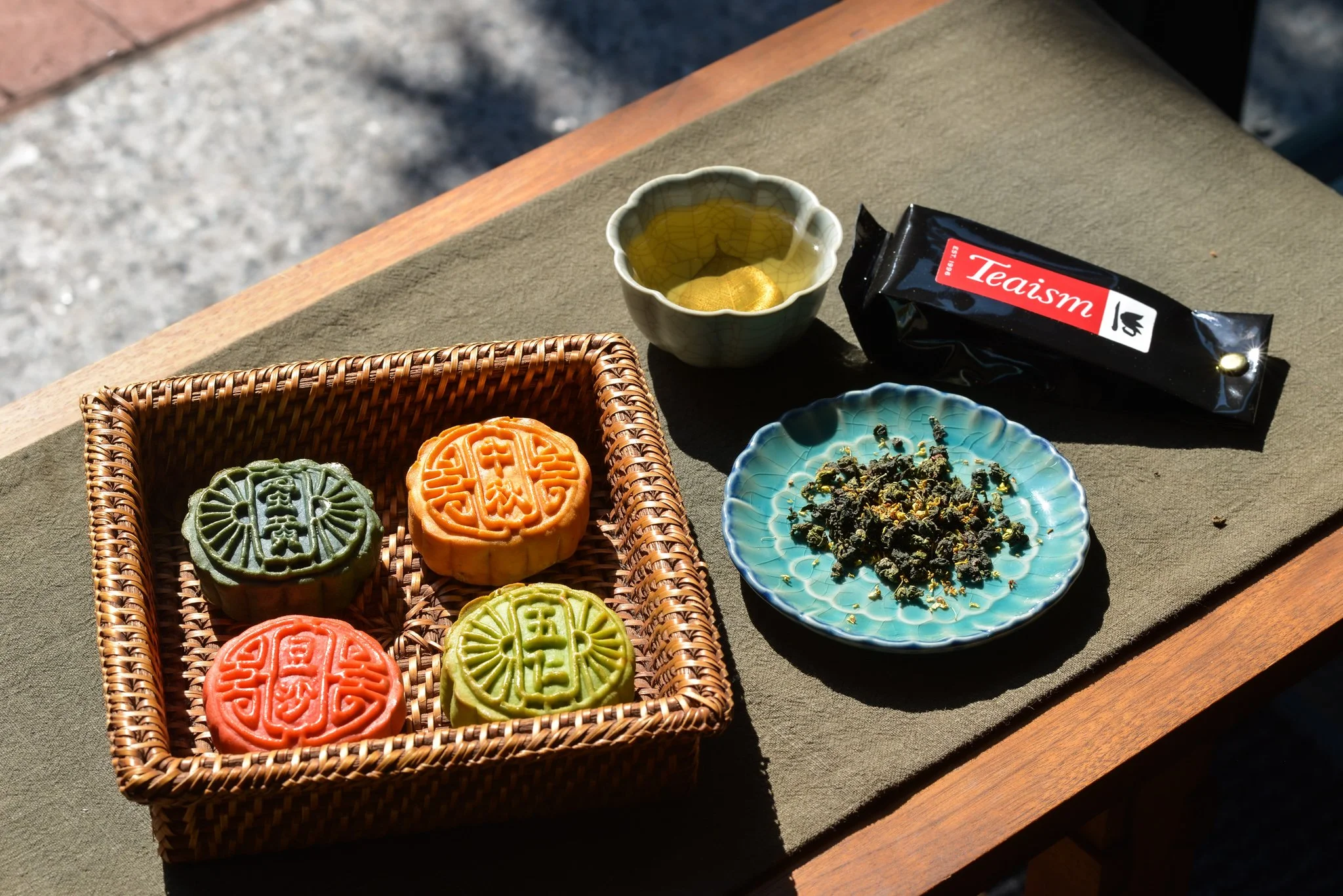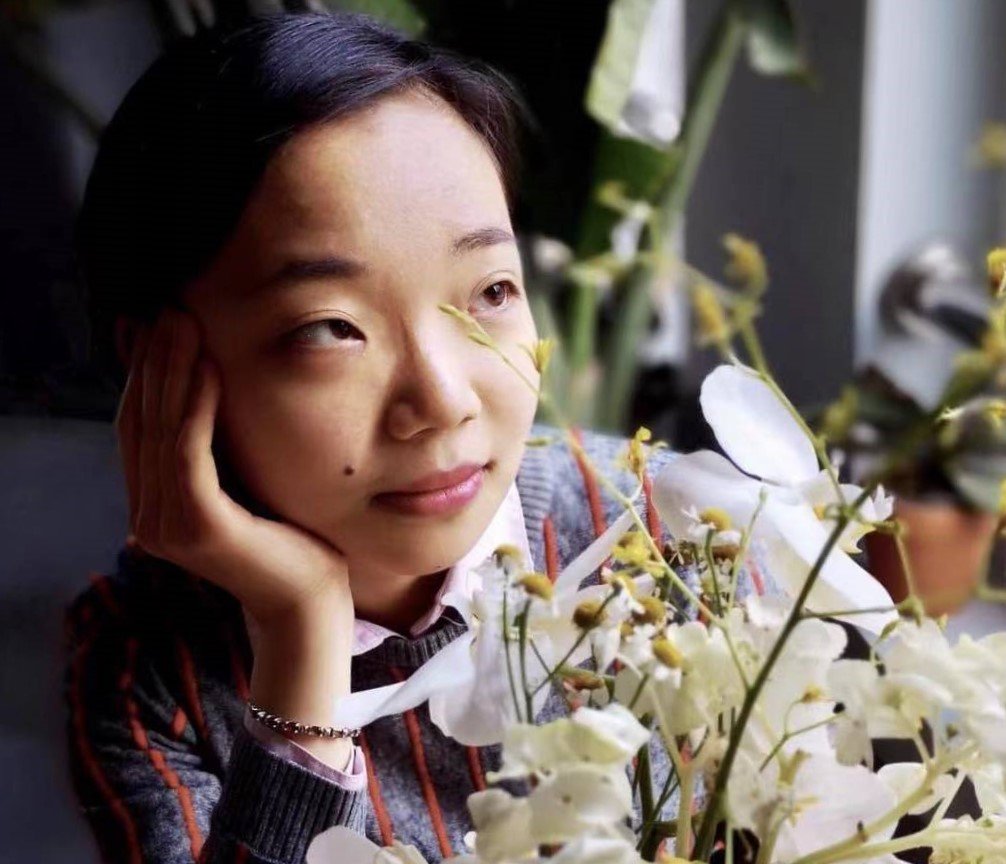MAKING SENSE OF MOON
- between Fantasy, Religion and Philosophy -
According to the Lunar calendar, this week is the start of 2022 Fall season, which means the Mid-Autumn Festival (中秋節) is just around the corner(!). I know it is still hard to believe that Fall has started, given the heat outside. The humidity on the East coasts of China and the United States will be slowly fading away, and this year, the Festival falls on September 10th, corresponding to the 15th day of the eighth lunar month. And again, the Chinese Street Market community has been working hard to prepare its annual Mid-Autumn Festival Mooncake Collection for you.
This year, our inspiration is to feel the sentiments as described in the Chinese classic literature and poetry - after the pandemic lockdown period, expressing our feelings towards life for its high or its low. “ It is like the Moon changing from the crescent moon to the full moon repeatedly” (人有悲欢离合,月有阴晴圆缺). Chinese Street Market will prepare traditional literary mooncake flavors described in a Fall party in Yihong Garden from the Chinese classic novel The Dream of the Red Chamber (红楼梦), suggesting pairing with the “hairy crab tea and osmanthus blend” (毛蟹茶, a type of Oolong Tea, read more on our website why it is called “hairy crab tea”) from our friends at Teaism DC. More highlights about this year's collection: We have fermented our own duck eggs which were freshly picked from local Amish farmers at Pecan and Meadows Farm. We are also collaborating with our guest chef who has designed the gluten-free version of the mooncakes with various exciting plant-based ice cream fillings.
Making Sense of Moon: between Fantasy, Religion and Philosophy
The ancestors of many races of mankind have seen the waning and waxing moon as an emblem of human immortality; among them are the ancient Chinese people. Their legends which associate human immortality with the moon are products of a primitive philosophy which, meditating on the visible changes, of the lunar orb, drew from the observation of its waning and waxing a notion that under a happier fate Man might have been immortal like the moon.
This notion had been a dim and primitive one. It was until the 6th century that the contrast between the eternity of the moon phases and the temporality of human beings’ life became pronounced in literary works, partly due to the introduction and thriving of Buddhism in China. In particular, the fundamental belief in the cycle of death and rebirth of Buddhism disagrees with the absolute dichotomy between “eternity” and “temporality” in early Taoism. Verses from a poem by Yu Xin (庾信, 513–581) showcase the encounter between the two religious traditions:
The waning crescent moon looks as if the new moon; / this autumn is redolent of last autumn. / … To comply with the way of heaven is to recognize the limitations, / but when can one be released from perturbation?
殘月如初月,新秋似舊秋。...... 樂天乃知命,何時能不憂?
In this excerpt, while noting the resurrection of the moon and nature’s cycles, Yu Xin quoted an old saying from The Book of Changes (《易经》), “Rejoice in complying with the way of heaven and recognize the limitations set by the mandate of heaven. (樂天知命故不憂)”. In this way, he expressed his confusion and regretted over the fact that man can never achieve immortality.
Within a century, the immortal moon had developed into a mature topo in literature to reflect on the tininess of an individual’s existence in the broad, endless universe. The renowned poet Zhang Ruoxu (張若虛, 660–720) from the Early Tang Period compared three “flowing” — of the river water, the moon and an individual’s life:
Who by the riverside did first see the moon rise? / When did the moon first see a man by riverside?
Many generations have come and passed away; / From year to year the moons look alike.
江畔何人初見月?江月何年初照人?人生代代無窮已,江月年年只相似。
To put it in a different way, Zhang Ruoxu lamented that though the river water and the moon come and go, they look as if the same for thousands of years; but once Man passes away, that is the end for him.
After three centuries, works by the poet and politician Su Shi (蘇軾, 1037–1101, Northern Song Dynasty [北宋]) helped to soothe this perennial distress. Su Shi was suffering from the death of his first beloved wife in his whole life; in his political career, he was marginalized and relegated. Frequent vicissitudes nurtured Su Shi’s open-minded attitude towards life. On the Mid-Autumn Festival of the year of Bing-Chen (1076), Su Shi was missing his younger brother Su Zhe (蘇轍), whom he had not met for seven years. In the poem dedicated to Su Zhe, Su Shi seemed to have found a compromise:
Men have sorrow and joy, they part and meet again; / The moon may be bright or dim, she may wax or wane. / There has nothing perfect since olden days. / Let us wish that man live as long as he can! / So that though miles apart, we’ll share the beauty she displays.
人有悲歡離合,月有陰晴圓缺,此事古難全。但願人長久,千里共嬋娟。
In the following years, especially during his delegation to Huang Zhou, one of Su Shi’s hardest times in his life, Su Shi further developed his interpretation of the contradiction between the eternal Nature and the temporal Man into a dialectical one and enunciated in The Former Ode on the Red Cliffs (《前赤壁賦》, 1082):
… I, Su Shi commented, “Do you happen to know the nature of water or the moon? Water is always on the run like this, but never lost in its course; the moon always waxes and wanes like that, but never out of its sphere. When viewed from a changing perspective, the universe can hardly be the same even within a blink of an eye. But when looked at from an unchanging perspective, everything conserves itself, and so do we. Therefore, what’s in them to be admired? Only the refreshing breeze on the river and the bright moon over the hills are an exception. If you can hear it, it is a sound to you; if you can see it, it is a view to you. It never ends and is never exhausted. It is the infinite treasure granted to us by our Creator for both of us to enjoy.”
...... 蘇子曰:「客亦知夫水與月乎?逝者如斯,而未嘗往也。贏虛者如彼,而卒莫消長也。蓋將自其變者而觀之,則天地曾不能以一瞬。自其不變者而觀之,則物與我皆無盡也。而又何羨乎?且夫天地之間,物各有主。苟非吾之所有,雖一毫而莫取。惟江上之清風,與山間之明月,耳得之而為聲,目遇之而成色,取之無禁,用之不竭,是造物者之無盡藏也,而吾與子之所共適。
Themes of Mid-Autumn: Osmanthus Flower & Hairy Crabs
As the Buddhist and Taoist views of life and death were mingling in Chinese philosophy and fantasy, which is reflected in literature and folk religions, the subjects associated with the moon enriched their meaning. In turn, the moon also becomes a magnet that brings all the typical sceneries of autumn together: osmanthus flowers (桂花, blossom of cassia tree), hairy crabs (毛蟹/大閘蟹), tidal bore, dew, pomelo fruits etc..
Remember the cassia tree that Wugang is trying to chop down in the moon? People have imagined that the shadows on the moon are those of the flourishing cassia tree. Therefore it is easy to understand why the tree can always heal itself, since the moon is immortal. Osmanthus flowers, the blossom of cassia tree, start to bloom from the eighth lunar month and can last for 3–4 weeks. The flower has a pleasant, sweet aroma; its colour varies from white, yellow to red, but golden-yellow is the most common. In his poem dedicated to the osmanthus blossoms, Xin Qiji (辛棄疾, 1140–1207) vividly described the appearance, fragrance of the all-loved flower and the best setting to enjoy its company — under the moon:
While young, I drank till drunk, awake from dream, / I remember I found in face the Southern Stream. / The full moon cast your shadow around, / On mist-veiled water deep, flowing without a sound. Only a yellow dot of mirth / Spreads so much fragrance on earth. / Dyed in autumn breeze and dew, / You would give the whole world a perfume new.
少年痛飲,憶向吳江醒。明月團團高樹影,十里水沉煙冷。
大都一點宮黃,人間直恁芬芳。怕是秋天風露,染教世界都香。
—— Pure Serene Music: To Laurel Flowers Enjoyed at Wujiang
(《清平樂·憶吳江賞木樨》)
To make the most from its delightful scent, Chinese people make osmanthus-fermented osmanthus wine, osmanthus tea, and other dishes with osmanthus flavorings, some with fresh osmanthus flowers, some with dry ones. The Chinese also make osmanthus honey, so that they can enjoy the aromatic taste of osmanthus flowers at any time in a year. A detailed episode in The Dream of the Red Chamber (《紅樓夢》, novel by Xueqin Cao [曹雪芹], 1715–1763) casts light on how this tiny flower can bring family and people together (Chapter 37):
On an autumn day, Baoyu was deeply moved by the new osmanthus blossoms at his residence, the Yihong Garden, and he plucks two sprigs, putting in a vase. But then his filial piety gets the better of him, “Though these flowers have just bloomed in my own garden, I cannot presume to enjoy them myself.” He hurries to fetch two vases and fill them with water, then puts a sprig of osmanthus in each and sends one to his grandmother and the other to his mother. Both are “so pleased they would have agreed to anything,” and they give him a large reward. (simplified)
In fact, the above was forwarded by one of Baoyu’s maid Qiuwen to other maids. After the chat, Baoyu’s chief maid Xiren sends some “osmanthus flower syrup steamed new chestnut flour cake”(桂花糖蒸的新栗粉糕) to Baoyu’s cousin Xiangyun. In the same chapter, the ladies of the noble family also had a great time gathering in their scenery garden, enjoying the delicious hairy crabs and the osmanthus flowers, composing poems.
2022 Mid-Autumn Mooncake Collection: Mooncakes & Hairy Crab Tea
Traditional Wheat Dough Mooncake Collection
To kick off the Mid-Autumn session, we are bringing some of the classic Cantonese-style mooncake fillings with our own interpretation.
Lotus Seed Paste & Salted Egg Yolk (蓮蓉蛋黃): Contrast of silky, sweet lotus seed and the crumbly, savory, oily egg yolk. (contain peanut oil, egg and wheat)
Lotus seed paste is made from dry lotus seeds newly harvested in the summer. These dry lotus seeds are soaked in cold water overnight, then drained and boiled. Fry the boiled lotus seeds under a low heat with a certain amount of granulated sugar, stir and add water from time to time until it reach the right texture.
You can also make salted egg yolks at home. Simply separate egg yolks from egg whites carefully and arrange the egg yolks at the bottom of a glass airtight container. Make sure they are not too close to each other. Cover them with sea salt, add a hint of strong alcohol (optional), cover the container and keep it in the refrigerator for 2–3 days. The egg yolks are ready when they are not runny (but not over-solidified). And of course, you can save the egg whites to make fluffy egg white omelets or financiers!
Taro Paste & Marron Glacé (芋蓉糖漬栗子): for vegans and vegetarians, we substitute salted egg yolk with marron glacé (candied chestnut), which is also the flavor of fall. The harmony of the rich, chewy dainty at the center and the moist lotus seed paste will send you to a tranquil Chinese garden with a gentle evening breeze. (contain peanut oil, and wheat)
Red Bean Paste & Osmanthus Flower (紅豆沙桂花): The method to prepare red bean paste is similar to that of lotus seed paste. You can add dry osmanthus flower in the process, or osmanthus flower honey or syrup to highlight the floral flavor. (contain peanut oil, and wheat)
Sichuan Peppercorn Salt Five-nuts (椒盐五仁): There is a variety of nuts and dry fruits combinations you can choose from for this mooncake filling. Our ingredients include cashews, almonds, pecans, macadamia nuts, pumpkin seeds, and sesame seeds. (contain peanut oil, nuts and wheat)
* Each traditional mooncake serves 2–4 people.
Snow Skin Mooncake & Ice-Cream Filling Collection (GF, V) by Guest Chef Jing
The mooncake selection Jing prepared this time is exactly drawn from the elaboration on symbolizing the moon for eternity. People have been exposed to the issue of life and death in both private and public spheres in unprecedented breadth and depth, and there are some new-onset mental health concerns in the post-covid era. All of us have experienced and thought about it so much, “Men have sorrow and joy, they part and meet again; / The moon may be bright or dim, she may wax or wane.” Instilling her feelings into the snow skin mooncakes, Jing designs her mooncake set themed “Taste of emotions” as the following:
The Deluxe Collection (4 pieces)
• Sorrow (悲): Mango passionfruit chia (bright tropical and citrusy flavor with a sweet aftertaste)
• Joy (歡): Peach, perilla & ginger jelly (sweet with a hint of spice)
• Parting (離): lychee tea, lychee, wolfberry & osmanthus flower jellies (silky sweet sourness with astringent aftertaste)
• Reunion (合): Jujube date, hawthorn berry brunoise (sweet with a hint of tartness)
The Premier collection (6 pieces) includes the four flavors above, plus
• Filled with Mixed Feelings (五味雜陳):mint, basil, coffee powder, chili pepper and black pepper corn jelly (bold and warm flavor, combining grassy sweetness, bitterness, and spiciness with a cool and refreshing aftertaste)
• Perfect Circle / Fulfilment (圓滿團圓):Black sesame, truffle, chocolate, chestnut brunoised (pleasantly sweet umami, velvety texture)
*About snow skin mooncakes: this type of non-baked mooncake originates from Hong Kong in the 1960s and has become popular across China and other Southeast Asian countries. It is always served cold, perfect for early Mid-Autumn Festivals (such as this year) when heat is still lingering. The skin, mainly made of sticky rice flour and rice flour, has a slightly chewy and elastic texture. Ice cream is the most common filling. Jing also adds crunchy elements or jelly layers to enhance the contrast.
Storage & consumption tips: snow skin mooncakes can last in the original packaging or an air-tight container in the freezer (not refrigerator) for up to 2 weeks. Leave out for about 20 minutes to thaw before serving. Refreezing is not advised.
Tea Pairing: the “Hairy Crab” by Teaism DC
Tea is the loyalist companion to mooncakes and most Chinese desserts. Depending on the flavor of the mooncakes, Chinese choose different teas, as people do dessert and wine pairing in western cuisines. The Hairy Crab by Teaism can go with all our mooncakes, especially the traditional cantonese-styled mooncakes. Originating from An Xi County in Fujian Province, its hairy leaves similar to hairy crab legs earns this Oolong tea the interesting name. The Hairy Crab is similar to the more well-known Tieguanyin (鐵觀音, lit. Iron Bodhisattva), sharing floral and fruity tastes. While Tieguanyin can be sharp with tobacco notes, Hairy Crab tend to be softer and buttery, with a creamy mouthfeel.
Blog prepared and edited by Yuxuan Cai
History Ph.D Candidate at University of Cambridge








